_
|
OUR
HISTORY
|
|
|
A
DRAGON'S VIEW
THE
ERUPTION OF MT. ST. HELENS |
|
|
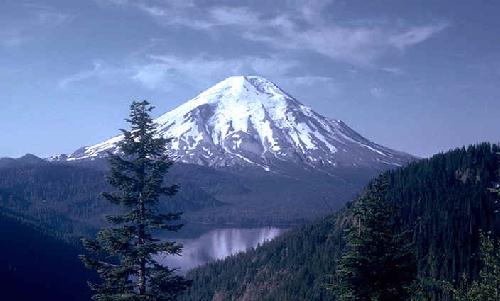 |
|
|
|
Former 318th FIS
"Green Dragon" Pilot Col. Randy Neville's account of the 1980
volcanic eruption of Mt. St Helens.
|
|
|
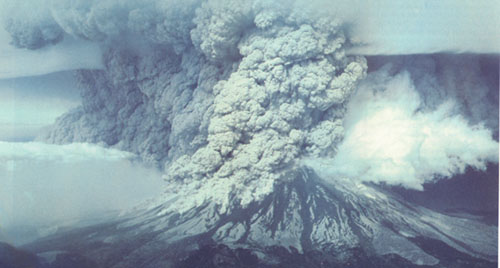
|
|
|
|
|
|
ONCE-IN-A LIFETIME
EXPERIENCE |
|
|
|
Col. Randy Neville (Ret), former F-106 Instructor Pilot with
McChord's 318th FIS "Green Dragons", relays his account of what was in
his words was a “once-in-a lifetime experience” when he and his fellow
Squadron mate witnessed the eruption Mt. Saint Helens from a T-33A
T-Bird flying thousands of feet in the air over Washington State.
|
|
|
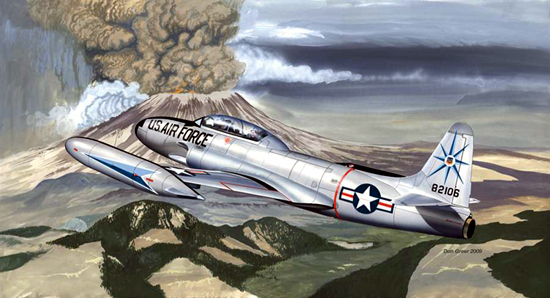 |
|
BY DON GREER - 2009 |
|
|
|
I had once-in-a-lifetime experience of flying over Mt. St. Helens on
Sunday morning, at 08:32 AM, May 18, 1980. I was in a T-33 with Capt
Bob Crow, being ferried to our detachment at Kingsley Field, Oregon, to
pick up an F-106 that needed to return to McChord for maintenance work.
We had taken off from McChord around 8:00 that morning and proceeded
south. About 30 minutes later, we were abeam Mt. St. Helens.
|
|
|
|
As we looked at the mountain, we commented how picturesque it appeared.
Although the mountain had periodically been spitting smoke or steam from
its top for several months, that morning, it was very peaceful, not a
whiff of smoke anywhere. As we watched, the top of the mountain
began lifting off right in front of us.
|
|
|
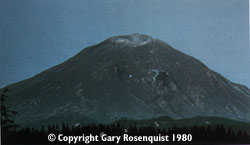
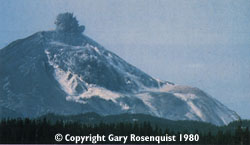 |
|
0827:00.0 |
0832:53.3 |
| |
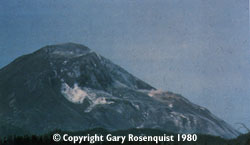
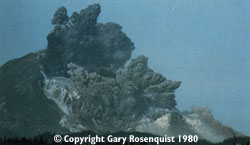 |
|
0832:47.0 |
0833:03.7 |
| |
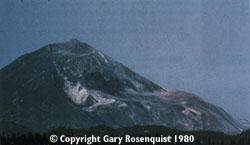
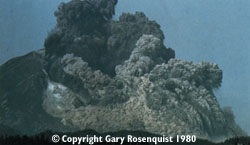 |
|
0832:49.2 |
0833:18.8 |
|
|
|
Initially, the smoke seemed to have its own heavy mass, rolling down
the sides of the mountain. Then the smoke and ash began developing
vertically, forming the mushroom shaped clouds associated with a nuclear
blast. Lightning was occurring from one part of the cloud to the
other. We notified Seattle Center of what we seeing, and the
controller responded that he was starting to see it on his scope - the
ash was thick enough that he was getting radar returns over several
square miles. We were on the western side of the mountain,
opposite from most of the blast, and far enough away that we were not in
danger. We orbited for a few minutes, taking a few pictures, then
preceded south. We knew Seattle Center would be busy establishing
a restricted area around the mountain, diverting traffic, and notifying
rescue, geological survey, and news agencies.
|
|
|
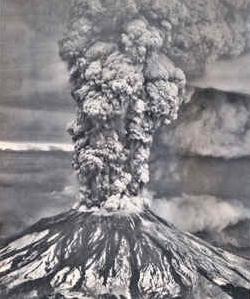 |
|
|
|
On my return flight later that afternoon in an F-106, while still far
south of the mountain and using the F-106 radar, I was able to get a radar
return on the plume as high as 55,000'.
|
|
|
|
The Mt St Helens eruption was obviously a tremendous event for the entire
Northwest, and certainly had a major impact on any flying unit in the
vicinity.
|
|
|
|
From the initial hints that Mt St Helens was entering an active phase, the
318th FIS had maintained contingency plans. The plans called for the
immediate recall of pilots and evacuation of all flyable aircraft to
Colorado. We knew the fallout from an eruption could damage the
aircraft and close the airfield for an extended period of time.
Fortunately, on the day of the big eruption, the winds kept the plume and
subsequent fallout away from McChord.
|
|
|
|
The eruption and the remaining volcanic crater became signature images for
those flying, working, and living in the northwest around that time.
|
|
|
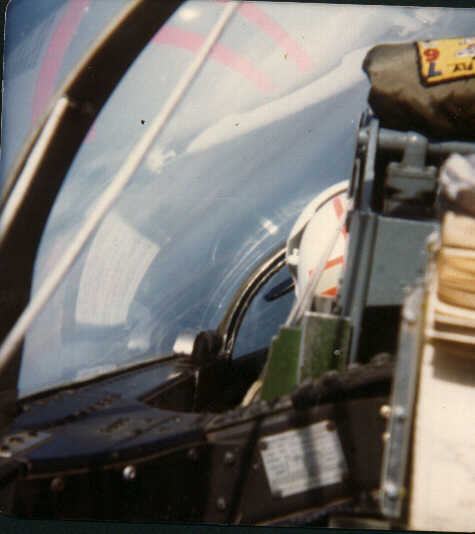 |
| PHOTO
BY GARY
PRICE
MILITARY
AIR |
|
|
| |
|
COLONEL
RANDY NEVILLE |
| |
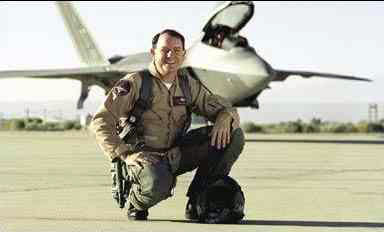 |
|
|
|
During the development of the USAFs F-22, Neville was
the primary pilot responsible for expanding the Raptor’s flight envelope
or maneuverability capabilities, and became the first Raptor pilot to
reach the 500-hour mark in 2004. With more than 600 hours in the F-22
aircraft, he is still a high-time Raptor pilot. Neville was also a
technical advisor in the making of the movie “The Hulk” and played a
role as an F-22 fighter pilot in the movie.
|
|
|
Col. Randy Neville (USAF Ret) began this 20-year
Air Force career in June of 1976 after Graduation from the University
of Tennessee with a BS in Electrical Engineering. After attending
pilot training at Williams AFB, Neville then joined the Air Defense
Weapons Center’s 95th Fighter-Interceptor Training Squadron, and later
with the 57th Fighter-Interceptor Squadron at Keflavik NAS, Iceland.
|
|
|
In March 1980 the then Captain joined McChord’s
318th Fighter-Interceptor Squadron, which at that time flew the
Lockheed T-33A Shooting Star proficiency trainer and the F-106A/B
Delta Dart Interceptor.
During his three years with the “Green Dragons” Neville proved to be
one of the Squadrons best Pilots, performing as one of the
Squadrons, Instructor and Evaluation pilot and Flight Commander.
In 1982 the then Captain was selected for the team of "Top Gun's" to
represent won the right to represent in the Squadron at the premier
Worldwide Air Defense Weapons Competition, the 1982 William Tell
Air-to-Air Weapons Meet, and the last for the Squadron in the F-106.
|
|
|
During his tour with the 318th FIS, the then
Captain was assigned to F-106A s/n 56-0459, a former test airplane
that in 1959 was used to make an attempt at the World's Speed Record
in 1959 which was later accomplished by another F-106. After
researching the airplanes history in the Speed Record project
(Operation Firewall) Neville sought approval from higher
headquarters to attempt a new speed record in F-106 -0459,
unfortunately the approval was never granted. As the squadron began
retiring F-106's in favor of the F-15's, # -0459 was selected to
remain at the Base and join the newly established McChord Air
Museum.
|
|
|
After the 318th conversion to from the F-106 into
the F-15 Eagle, Neville joined his first overseas unit, the F-16
equipped 401st Tactical Fighter Wing’s 614th Tactical Fighter
Squadron Torrejon, Spain, later he would be back in the states with
the 3246 Test Squadron, Eglin AFB, FL
conducting weapons development tests on the F-4 and F-16. and In his final assignment Neville was appointed as Director of Flight
Operations for the USAF Test Pilot School at Edwards AFB. After a 20
year career Randy Neville retired from the Air Force in 1996.
|
|
|
Shortly after the end of his Air Force career,
Neville continued his tie with high performance aircraft with his
employment as a Test Pilot with Boeing’s F-22 Fight Test
Organization during the fighters early development. During his time
in Seattle, Neville would also work with Boeing's Commercial Flight
Test organization, testing many of the company’s newest Commercial
Airplane derivatives.
|
|
|
As the F-22 program moved into the active flight
test (airframe and avionics testing), Neville relocated to Edwards
AFB, CA, and began flying the F-22, as well as the F-16, which is
routinely use as a chase aircraft.
Neville was the primary pilot responsible for
expanding the Raptor’s flight envelope, or maneuverability
capabilities.
|
|
|
In 2004 Neville became the
first Raptor pilot to reach the 500-hour mark. With more than 600
hours in the F-22, he is still (2009) the Raptors high-time pilot.
Neville also was a technical advisor in the making of the movie “The
Hulk” and played an F-22 fighter pilot in the movie.
|
|
|
In
2005, Neville joined the 787 test program as an engineering test pilot
for the Boeing 787 Dreamliner. As an engineering test pilot, Neville
conducts flight tests of new airplane designs, establishing the basic
airworthiness of the airplane and verifying that it functions as
designed.
|
|
|
On
December 15, 2009, Chief Test Pilot Mike Carriker and First Officer
Randy Neville were at the
controls of the 787 during its long awaited maiden flight over
Western Washington State.
The pilots spent three hours putting the 787 through its paces,
before landing at Boeing Field in Seattle. The 787 is the World's
first jetliner to use
composite construction and all-electric systems.
|
|
|
| |
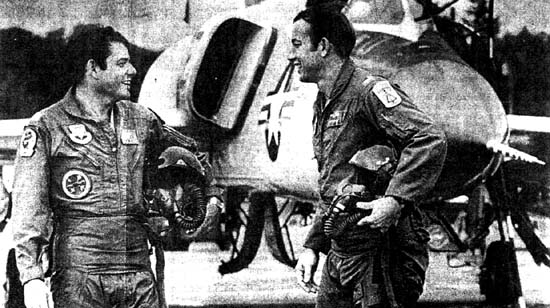 |
|
PHOTO BY BOB RUDSIT -
TACOMA NEWS
TRIBUNE |
|
The then Captain Randy Neville , (left) former F-106 Instructor
Pilot with the McChord's 318th FIS, is pictured above with fellow 318th
Pilot Capt. Mark Debolt after a William Tell practice flight at McChord
AFB in October 1982. While with the 318th Neville was assigned to the
Museums F-106A, s/n 56-0459.
|
| |
| |
|
Website
provided and maintained by: |
|
|
|
The
McChord Air Museum Foundation |
|
P.O.
Box 4205 |
|
McChord
AFB, WA. 98438-0205 |
|
253-982-2485 |
|
e-mail
- mamfound@mcchordairmuseum.org |
|
|
|
|

|
|
|
_
|